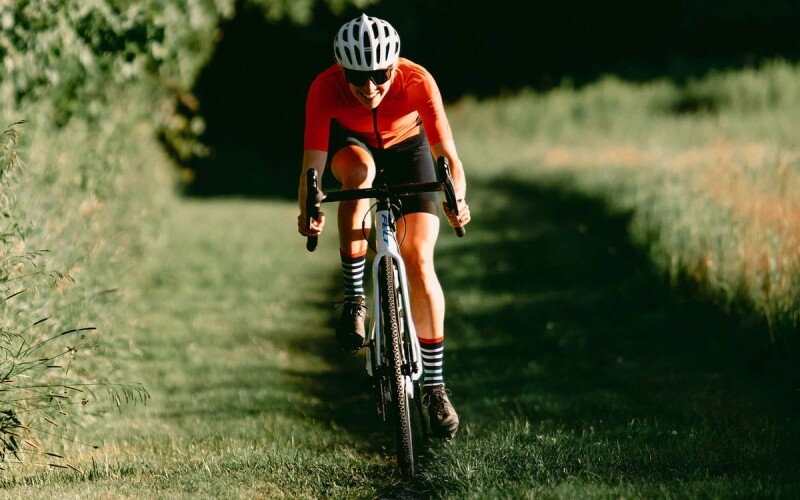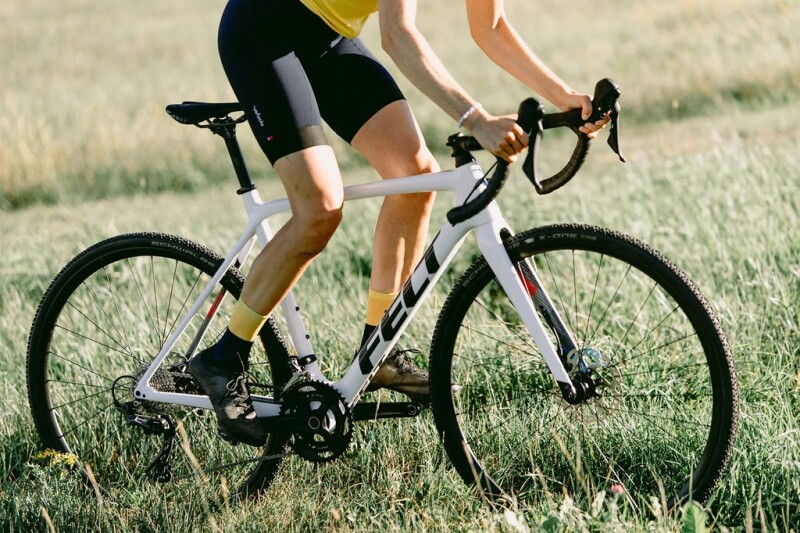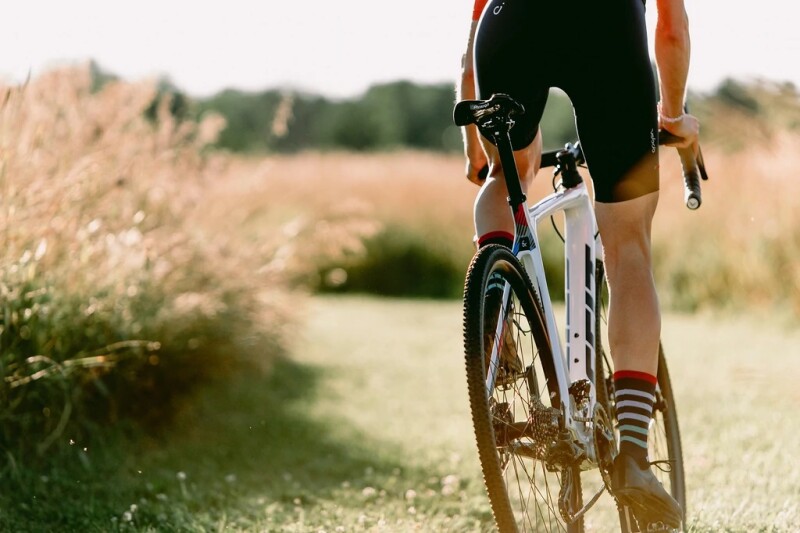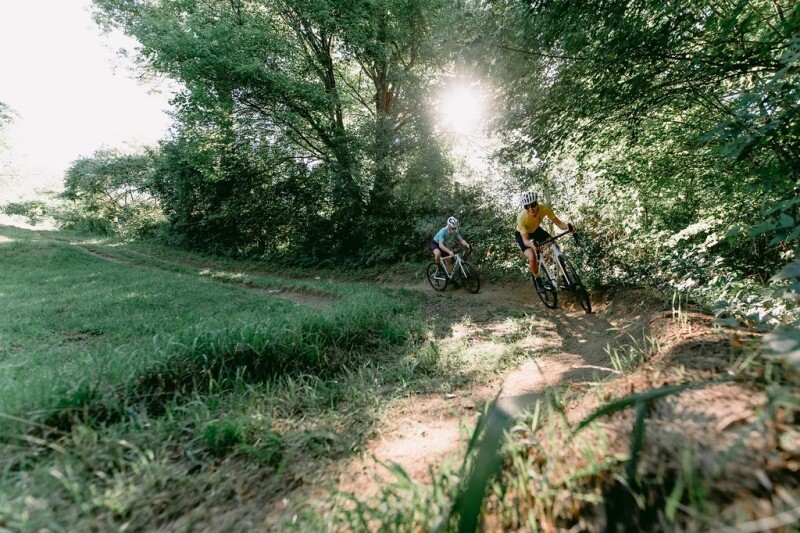Felt Bicycles (United States) - [Note: The global COVID-19 pandemic has brought unprecedented challenges, changes, and even cancellations to organized sports around the world, including both at the amateur and professional levels. At its core, cyclocross is all about racing. So while organized racing for the upcoming cyclocross season remains in limbo for many regions as cyclists around the world still commit to conquering the pandemic threat, we’re publishing this blog post in the spirit of optimism and hope. As racing returns to regions where it's safe to do so, let’s all train hard, have fun, and be kind.]
Cyclocross is one of the most unique, challenging, and just plain fun forms of bike racing in existence. Also known simply as “’cross,” cyclocross involves riding a drop-bar bike very similar to a road bike over a relatively short racecourse featuring a combination of rough terrain—such as deep mud, sand, rocks, and even snow—for several repeating laps. “Wait,” you ask, “isn’t that cross-country mountain bike racing?” Not quite. Again, the distinction is that cyclocross racing involves using a cyclocross bike, which is similar to a road bike in terms of basic geometry and drop-style handlebars. There are also restrictions on the types and sizes of tires that can be used, either because of the available frame clearance or because of race organizers’ regulations.
Cyclocross arose in Europe in the late 1800s when cyclists began racing each other not only on the roads of the time, but also across impromptu courses that cut across farmland and fields. Most cycling historians agree that cyclocross in the form that we know and love today began in 1902 when Daniel Gousseau of France organized the first French National Championship. It quickly caught on in neighboring nations, and grew to become a sport adored by cyclists around the globe—although the leading cyclocross nations, at least when it comes to professional competitions, tend to be those from Western Europe, with Belgium and the Netherlands being arguably the two most dominant today. The traditional cyclocross season occurs in the northern hemisphere’s autumn and winter, making it a great option for dedicated road racers to tackle during the usual road off-season.
There’s nothing quite like cyclocross racing. Its format of relatively short racing times (usually 30 to 90 minutes) means that it’s an accessible form of competition for which anyone can train, even those with busy lives and other obligations outside of riding bikes. But the short format means that races are typically lung-searing, leg-burning affairs that reward sprinting ability, handling prowess, and razor-sharp focus. Cyclocross racing’s short courses also make it a great spectator sport, as fans can get up close and personal with the riders to cheer them on multiple times throughout the event and not miss any of the action. If you’re thinking about trying your hand at cyclocross, do it—you’ll have an absolute blast. Check with your local bike shop or a local cycling club about race events in your area, and read on for a few tips to help you get started.
The bike:
What makes a cyclocross bike unique amongst drop-bar bikes? At first glance, it doesn’t appear like there’s much. But the biggest difference between a cyclocross bike and a road or gravel bike is in its geometry. Cyclocross bikes are designed to be raced on courses that often include a variety of terrains such as mud, sand, rocks, and even snow. They also include run-up sections that require racers to dismount their bike, as well as barriers that must be jumped over either by dismounting or bunny-hopping. As such, a cyclocross bike will have a higher bottom bracket height relative to a gravel bike, and even a road bike. A cyclocross bike will also have shorter chainstays and a lower stack height, both of which combine for a more aggressive riding position and significantly more agile handling than a road or gravel bike. This is intentional by design, because the confines of a cyclocross racecourse are incredibly tight, requiring racers to slow down rapidly, roll through a tight turn, and then accelerate up to speed quickly—a process which is repeated ad nauseum throughout multiple laps of a race.
When it comes to any new bike, we always recommend investing in some time with a reputable and experienced bike fitter, especially one who is well-versed in the discipline of your new bike—in this case, cyclocross. Compared to the riding position you have for your road bike position, you’ll most likely end up with a cyclocross position that involves raising your front-end setup around 1-2cm, and shortening the cockpit’s length by around 1-2cm, which is a general rule of thumb that should help give you a bit more control over technical terrain. This is just a general range for informational purposes, though, so be sure to check with your bike fitter on the best position that your body needs.
Tires win races:
Like other pro racing disciplines such as road, track, time trial, and triathlon, cyclocross race organizers have set up various rules and regulations to help govern the sport and create a level playing field. And when it comes to cyclocross racing, few rules are more important (and hotly debated amongst ’cross enthusiasts) as those regarding tires. Back in 2010, cycling’s world governing body (UCI) implemented a rule change that set the maximum measured width of tires at 33mm in UCI-sanctioned competitions. Since then, however, many wheel and tire companies have released wider rims and new tire models with a large variety of compounds, tread designs, and casings, all for road and gravel riding applications. As such, many cyclists have been experiencing just how awesome wide tires are for mixing up or enhancing their regular rides.
Various federations around the world have experimented with allowing different tire widths for amateur racing, and even non-UCI-sanctioned pro racing. As such, there’s tended to be a bit of confusion regarding what tires are allowed in certain competitions. Recently, at least in the United States, the regulations around tires have been changed again, with the USA Cycling organization expanding the limit for cyclocross race tires to 38mm (measured) for certain racer categories.
Bottom line: When you sign up for your cyclocross race, make sure to consult with your local racing organization and verify their rules around what tires are allowed. If you’re just starting out, we recommend getting the widest tire model that will fit your frame with adequate clearance, along with a tread pattern that is designed for the type of terrain you’ll be encountering (i.e. dry and dusty, wet and muddy, or even snow-packed terra firma). One caveat to this is that if you’ll be racing on some wet and muddy terrain, go 2-4mm narrower with your tires in order to ensure that mud won’t get clogged in your frame and slow you down.
All about handling:
Racing cyclocross is quite a bit different than racing on the road, but it’s by and large not too different in terms of your biomechanics and how your body uses energy. If you’re just starting out, focus on a few small things to help you finesse your road riding style to better suit the demands of cyclocross. For fast and/or technical descents, put your hands into the drops for better control, keep your pedals parallel to the ground in order to create as stable a platform as possible, and stand up a little bit to keep your backside off your saddle and ensure your legs are being used to absorb the majority of the impacts.
When you’re riding along a relatively flat section of the cyclocross course—and this is especially true if the terrain is on the bumpier side—you’ll want to sit a tad further towards the back of your saddle than you would when you’re powering along on the road. At the same time, you should aim to pedal with a slightly lower cadence than you normally would on the road. Together, this will force your legs to push against a touch of extra resistance and utilize more torque, which in turn helps you unweight your body from atop the saddle a bit and allows the bike to move more freely underneath you. This can help the bike soak up more of the bumps and vibration from the terrain, and reduce arm fatigue, as well. Be sure to keep your arms slightly bent, too.
Dismounting—huh?
Here’s another thing that makes cyclocross racing so unique. What other cycling discipline requires you to dismount and remount your bike mid-race?! (Triathlon? Maybe, but c’mon, that’s a different animal entirely.) A proper cyclocross race will feature a few obstacles that require you to dismount and remount your bike. These include things like barriers and ultra-steep hills or ramps called “run-up sections.” In some instances, one might be able to bunnyhop over certain barriers or other obstacles, but that’s an advanced-level skill, and for those starting out, we recommend learning the basics in the form of proper mounting and dismounting technique.
When dismounting, your goal should be to smoothly transition from riding into a quick run. This is to preserve your momentum so that you don’t lose time on your rivals, or perhaps even gain an advantage over them. Most riders will dismount towards the non-drive-side of their bike in order to mitigate potential damage to the chain or derailleurs. Keep your hands on the hoods or in the drops to ensure you have maximum braking control. Bring your left leg down into the “6 o’clock position” so that it’s pointed straight down, and shift your body weight onto it. This should feel quite stable. Then unclip your right foot and swing your leg around the back of the bike, then move it forward in between your bike and left leg so that you’re in a ready-to-run position. Slow down as much as is appropriate and place your right hand onto the top tube of your bike—this is to have you ready to lift the bike over the barrier or obstacle. When you approach the barrier, unclip your left foot immediately before you plant your right foot onto the ground and start running. Leap over the barrier and lift your bike with you.
For run-up sections, long sections of deep, squishy mud, or any other time when you’ll be running off the bike for an extended period of time, you’ll want to lift your bike onto your shoulder (with the underside of the top tube resting on it), then wrap your arm underneath the down tube and grab hold of the left handlebar drop. This technique has long proved to be the most stable for carrying a drop-bar bike for a long duration of time, which will help reduce arm fatigue and help you save energy for technical handling elsewhere on the racecourse.
To remount, place your bike gently back onto the ground, then put your hands on the hoods or the tops of your handlebars. The goal isn’t necessarily to jump back onto your saddle, but rather to slide onto it. Start slow, and bring your right leg around the back of the saddle and up over it while pushing off from the ground with your left leg. Aim to have your right thigh land onto the saddle, and then shift your body weight towards the right so that you slide over and into your regular riding position. It’ll take a lot of practice to get good at dismounting and remounting, so start slow in an open space without any obstacles, and keep at it.
Training & workouts:
Cyclocross is not only one of the most unique forms of bike racing, it’s also one of the most exhausting thanks to its format involving all-out sprint efforts over rough and technical terrain. So it’s important to make sure you’re training properly if your goal is to capture a strong race result—and, hey, if your goal is to drink beer, eat some frites, and soak in the sounds of a cowbell-clanging crowd, that’s cool, too! Here are a few training ideas to help you prepare for your first (or even hundredth, if you’re a veteran racer) cyclocross race day:
Mix some short, hard efforts into your bike ride (whether that’s on a 'cross bike or even your road bike). Try 5 x 2 min at 120% FTP with 3-minute recoveries. After you’ve made sure that you’re properly warmed up, begin your first effort pedaling to 120% of your FTP. Keep the effort steady for two minutes. Ease off, and engage in a recovery spin for three minutes. Repeat the effort another five times, or so. Remember, always listen to your body—push yourself to the point of improvement, but not to overexertion. If you don’t know your FTP or prefer a less structured workout, just plan on repeating some short sprints into your regular ride to get your body used to multiple explosive efforts over a short period of time.
Start strong, and don’t neglect a warmup. Before the start of your cyclocross race, make sure you get in a solid warmup. Go pedal your bike around the race venue, or jump onto a stationary trainer. Pedal easy for a while to get the blood flowing, then toss in a few sprints and hard efforts to fire up your lungs. The goal is to be able to sprint hard immediately at the start, so make sure you’re ready.
Practice your mounting and dismounting. Review the information found elsewhere in the blog post about mounting and dismounting, then put it into practice. Find an empty field or other area that can replicate a cyclocross racecourse, and make sure it’s in a flat, open area to give you plenty of space when you’re starting out. Try dismounting your bike first, and don’t worry about remounting just yet. Take it very slowly, and be careful not to twist an ankle or crash. This signature element of ’cross racing is all about technique, so there’s no need to rush things. Once you’ve practiced a fair bit and you’re able to safely and comfortably dismount, start trying to remount your bike, too. Again, go slow and focus on mastering the technique before doing things anywhere close to race-pace.










































Interested? Submit your enquiry using the form below:
Only available for registered users. Sign In to your account or register here.